Using Neural Networks for Bicycle Route Planning
Abstract
1. Introduction
2. Previous Work
3. Materials and Methods
3.1. Modelling Bicycle Path Using the Multicriteria Analysis
3.1.1. Points of Interest
3.1.2. Criteria Choice
- Road segment length;
- Road type;
- Slope grade;
- Distance between the Emergency unit and the road segment;
- Distance between the drinking water source and the road segment.
3.1.3. Model Parameters
3.1.4. Model Production
3.2. Modelling Bicycle Paths Using Neural Networks
Neural Network Details
4. Results
4.1. Bicycle Routes Created with NN-s
4.2. Bicycle Routes for Imotski Created by the Multicriteria Analysis
4.3. Bicycle Routes for Imotski Created by the Neural Networks
5. Discussion
6. Conclusions
Author Contributions
Funding
Institutional Review Board Statement
Informed Consent Statement
Data Availability Statement
Conflicts of Interest
References
- Latifi, R.; Hadeed, G.J.; Rhee, P.; O’Keeffe, T.; Friese, R.S.; Wynne, J.L.; Ziemba, M.L.; Judkins, D. Initial experiences and outcomes of telepresence in the management of trauma and emergency surgical patients. Am. J. Surg. 2009, 198, 905–910. [Google Scholar] [CrossRef] [PubMed]
- Miller, A.C.; Ward, M.M.; Ullrich, F.; Merchant, K.A.; Swanson, M.B.; Mohr, N.M. Emergency Department Telemedicine Consults are Associated with Faster Time-to-Electrocardiogram and Time-to-Fibrinolysis for Myocardial Infarction Patients. Telemed. e-Health 2020, 26, 1440–1448. [Google Scholar] [CrossRef] [PubMed]
- Yegnanarayana, B. Artificial Neural Networks; Prentice-Hall of India: Hoboken, NJ, USA, 2006. [Google Scholar]
- Basheer, I.A.; Hajmeer, M. Artificial neural networks: Fundamentals, computing, design, and application. J. Microbiol. Methods 2000, 43, 3–31. [Google Scholar] [CrossRef]
- Jain, A.K.; Jianchang, M.; Mohiuddin, K.M. Artificial neural networks: A tutorial. Computer 1996, 29, 31–44. [Google Scholar] [CrossRef]
- Đerek, J.; Sikora, M. Bicycle route planning using multiple criteria GIS analysis. In Proceedings of the 2019 IEEE 27th International Conference on Software, Telecommunications and Computer Networks (SoftCOM), Split, Croatia, 19–21 September 2019. [Google Scholar]
- Hsu, T.P.; Lin, Y.T. A model for planning a bicycle network with multicriteria suitability evaluation using GIS. WIT Transactions on Ecology and the Environment 2011, 148, 243–252. [Google Scholar]
- De Grann, J.G. Extensions of the Multiple Criteria Analysis Method of T.L. Satty, A Report for National Institute for Water Supply; EURO IV.; Cambridge: Voorburg, The Netherlands, 1980. [Google Scholar]
- Csutora, R.; Buckley, J.J. Fuzzy Hierarchical Analysis: The Lambda-Max Method. Fuzzy Sets Syst. 2001, 120, 181–195. [Google Scholar] [CrossRef]
- Chen, P.; Qing, S.; Suzanne, C. A GPS data-based analysis of built environment influences on bicyclist route preferences. Int. J. Sustain. Transp. 2018, 12, 218–231. [Google Scholar] [CrossRef]
- Huang, Y.; Gordon, Y. Selecting Bicycle Commuting Routes Using GIS. Berkeley Plan. J. 1995, 10, 75–90. [Google Scholar] [CrossRef][Green Version]
- Bi, H.; Shang, W.L.; Chen, Y.; Wang, K.; Yu, Q.; Sui, Y. GIS aided sustainable urban road management with a unifying queueing and neural network model. Appl. Energy 2021, 291, 116818. [Google Scholar] [CrossRef]
- Samarasinghe, C.K. Landslide susceptibility prediction based on GIS and Artificial Neural Network. Ph.D. Thesis, University of Colombo School of Computing, Colombo, Sri Lanka, 2021. [Google Scholar]
- Wang, Z.; Zlatanova, S.; Moreno, A.; Van Oosterom, P.; Toro, C. A data model for route planning in the case of forest fires. Comput. Geosci. 2014, 68, 1–10. [Google Scholar] [CrossRef]
- De Luca, M. A comparison between prediction power of artificial neural networks and multivariate analysis in road safety management. Transport 2017, 32, 379–385. [Google Scholar] [CrossRef]
- Sameen, M.; Biswajeet, P. Severity prediction of traffic accidents with recurrent neural networks. Appl. Sci. 2017, 7, 476. [Google Scholar] [CrossRef]
- Song, J.; Shengwei, Q. The Bus Line Supporting System Based On Learning Neural Network Model Applied In GIS. In Proceedings of the 2015 5th International Conference on Computer Sciences and Automation Engineering (ICCSAE 2015), Sanya, Hainan, China, 14–15 November 2015; Atlantis Press: Pleasantville, NI, USA, 2016. [Google Scholar]
- Kia, M.B.; Pirasteh, S.; Pradhan, B.; Mahmud, A.R.; Sulaiman, W.N.; Moradi, A. An artificial neural network model for flood simulation using GIS: Johor River Basin, Malaysia. Environ. Earth Sci. 2012, 67, 251–264. [Google Scholar] [CrossRef]
- Shah, S.A.; Brijs, T.; Ahmad, N.; Pirdavani, A.; Shen, Y.; Basheer, M.A. Road safety risk evaluation using gis-based data envelopment analysis—Artificial neural networks approach. Appl. Sci. 2017, 7, 886. [Google Scholar] [CrossRef]
- Pritchard, R.; Yngve, F.; Bernhard, S. Bicycle level of service for route choice—A GIS evaluation of four existing indicators with empirical data. ISPRS Int. J. Geo-Inf. 2019, 8, 214. [Google Scholar] [CrossRef]
- Grekousis, G.; Panos, M.; Yorgos, N.P. Modeling urban evolution using neural networks, fuzzy logic and GIS: The case of the Athens metropolitan area. Cities 2013, 30, 193–203. [Google Scholar] [CrossRef]
- Lenstra, J.K.; Kan, A.R. Some simple applications of the travelling salesman problem. J. Oper. Res. Soc. 1975, 26, 717–733. [Google Scholar] [CrossRef]
- Udovičić, G.; Ðerek, J.; Russo, M.; Sikora, M. Wearable Emotion Recognition System based on GSR and PPG Signals. In Proceedings of the 2nd International Workshop on Multimedia for Personal Health and Health Care, Mountain View, CA, USA, 23 October 2017; ACM: New York, NY, USA, 2017. [Google Scholar]
- Dalmatia-Bike. Available online: http://www.dalmatia-bike.com (accessed on 30 May 2019).
- Dalmacija-Šibenik. Available online: http://www.bikeandhike.hr (accessed on 14 April 2020).
- Lv, C.; Xing, Y.; Zhang, J.; Na, X.; Li, Y.; Liu, T.; Cao, D.; Wang, F.Y. Levenberg–Marquardt backpropagation training of multilayer neural networks for state estimation of a safety-critical cyber-physical system. IEEE Trans. Ind. Inform. 2017, 14, 3436–3446. [Google Scholar] [CrossRef]
- Lipton, Z.C.; Berkowitz, J.; Elkan, C. A critical review of recurrent neural networks for sequence learning. arXiv 2015, arXiv:1506.00019. [Google Scholar]


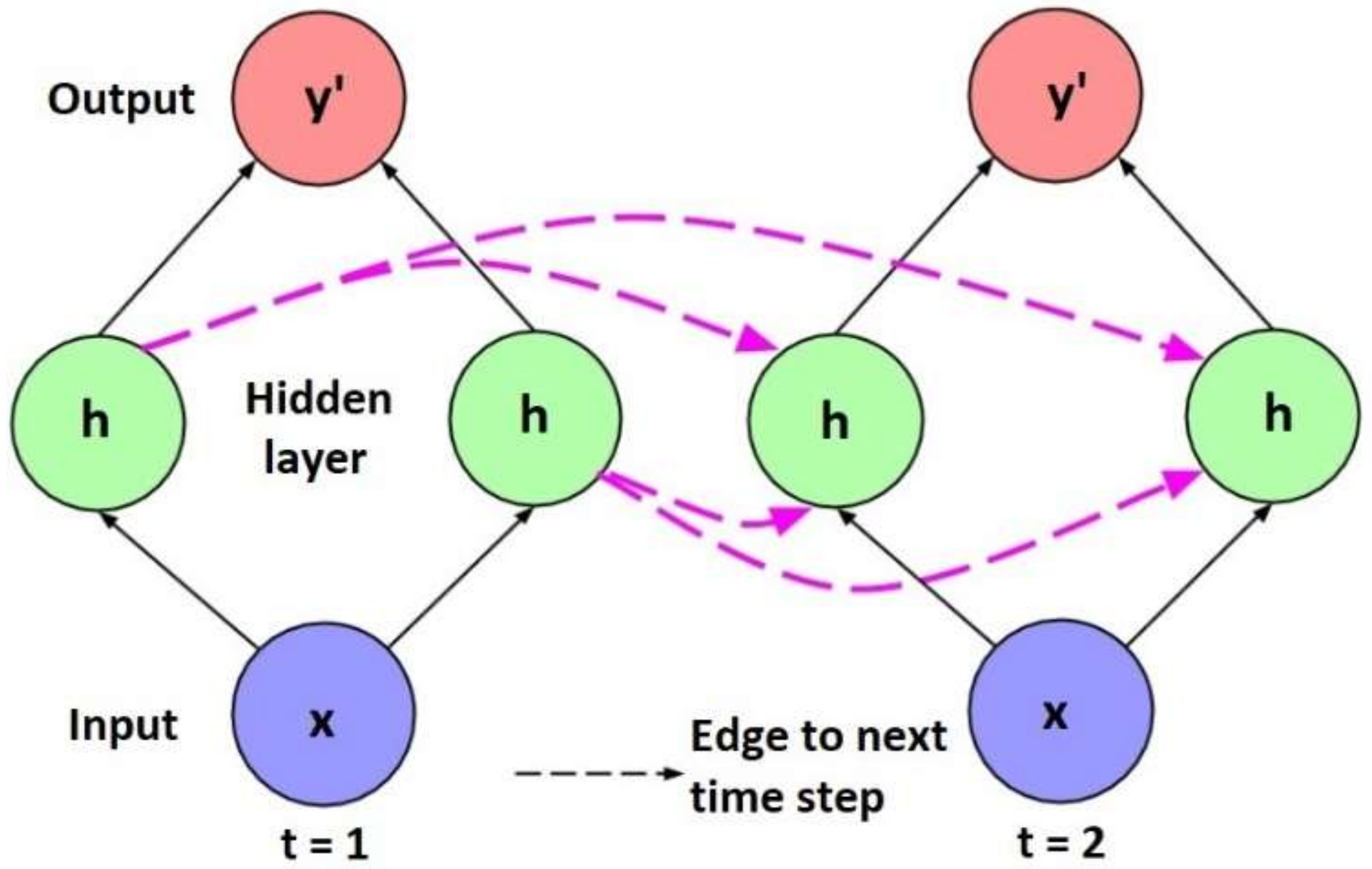
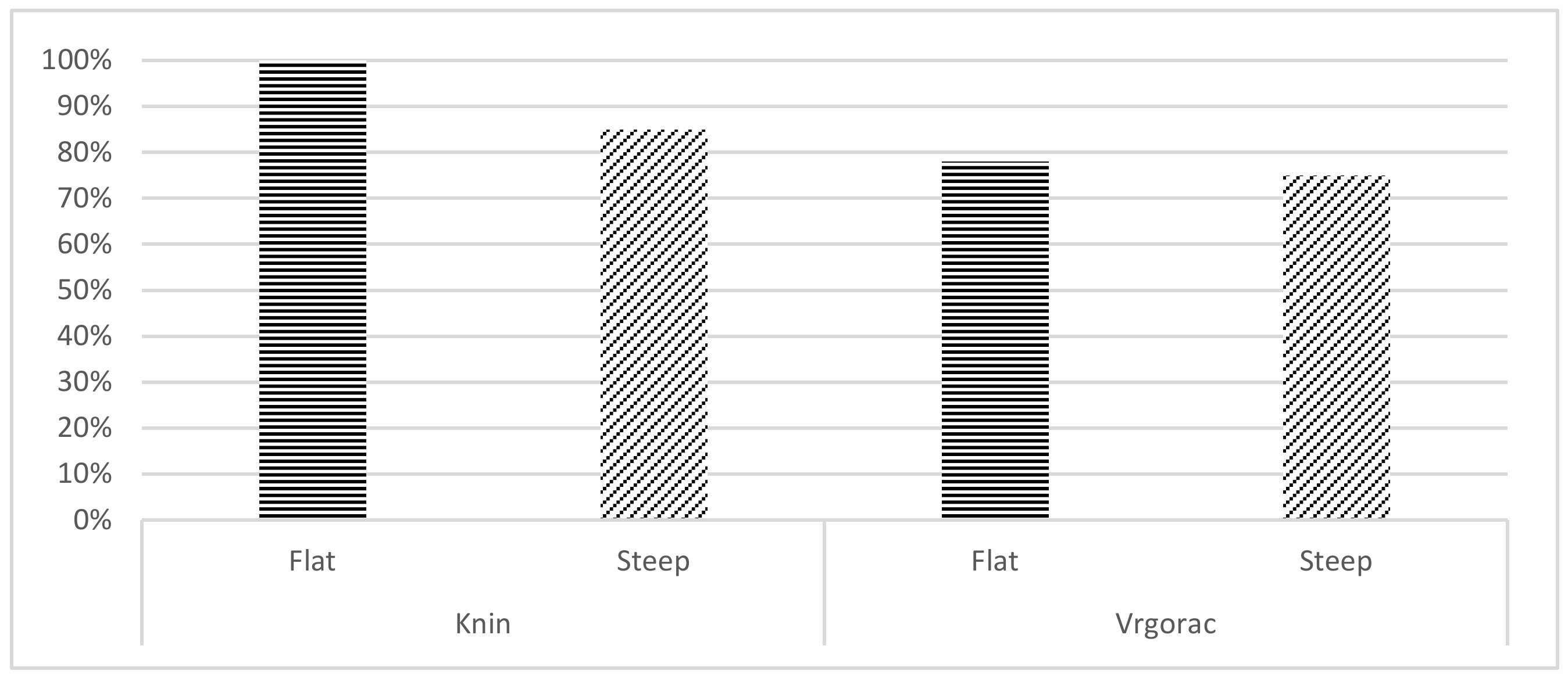
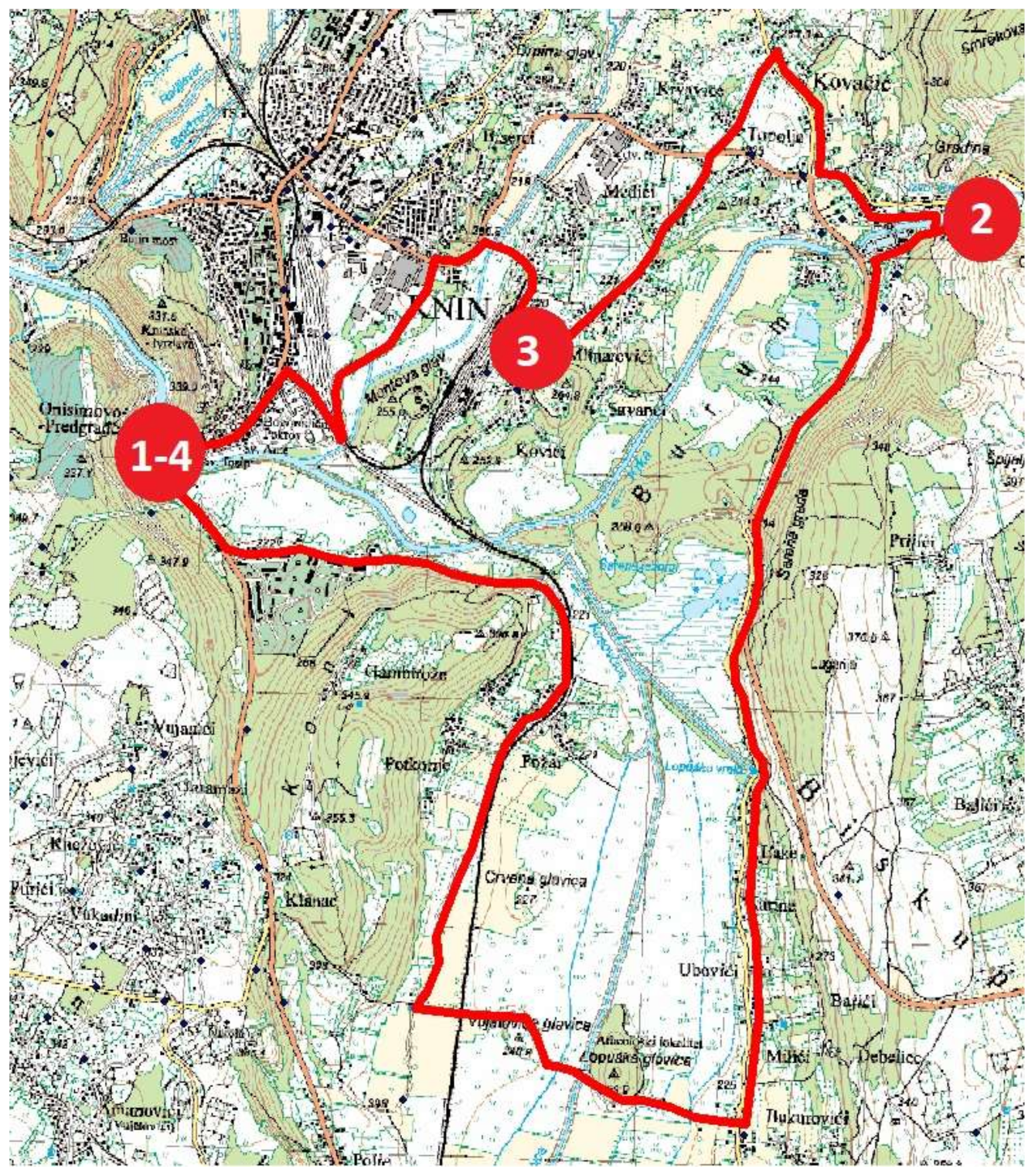

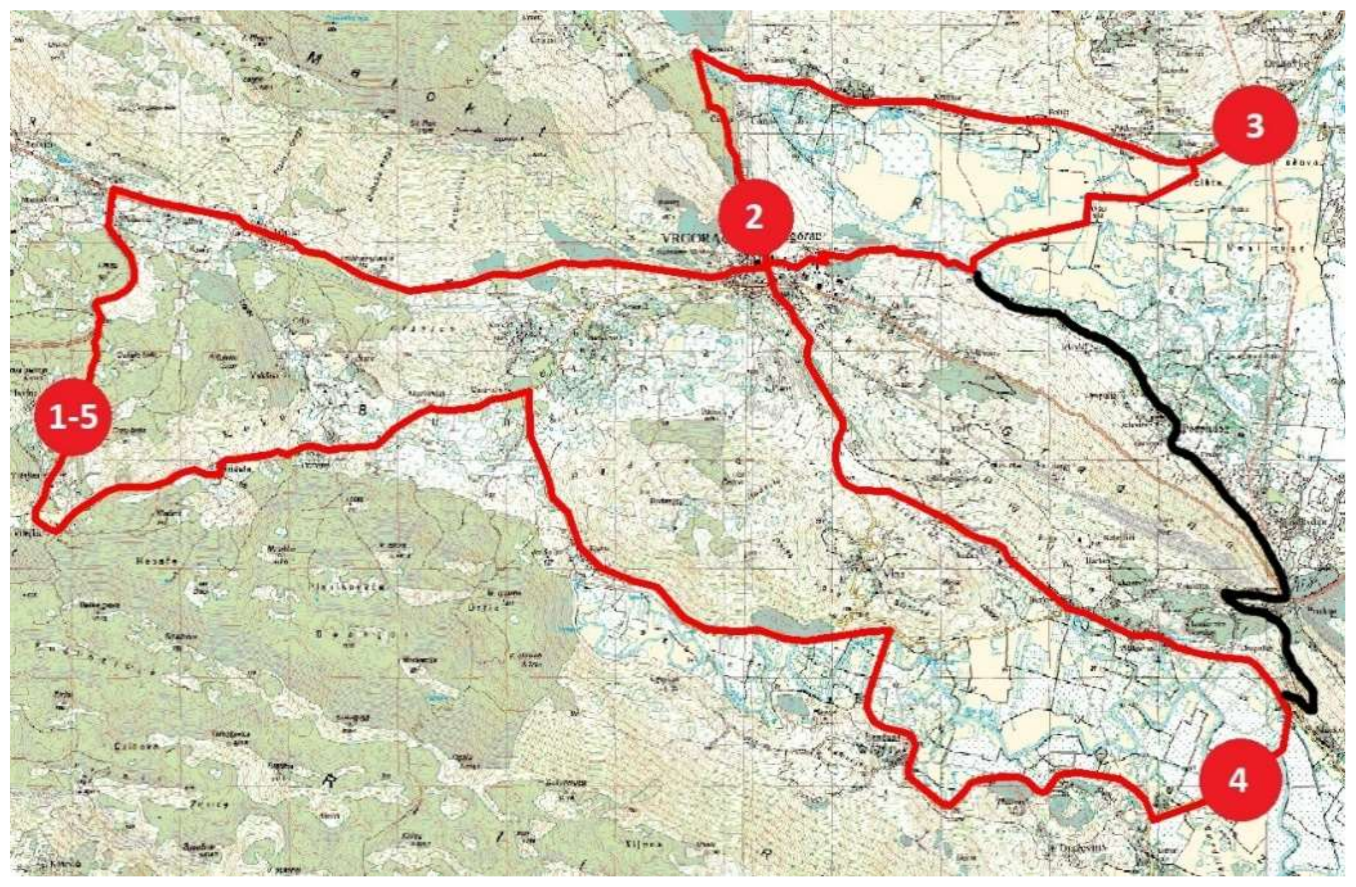
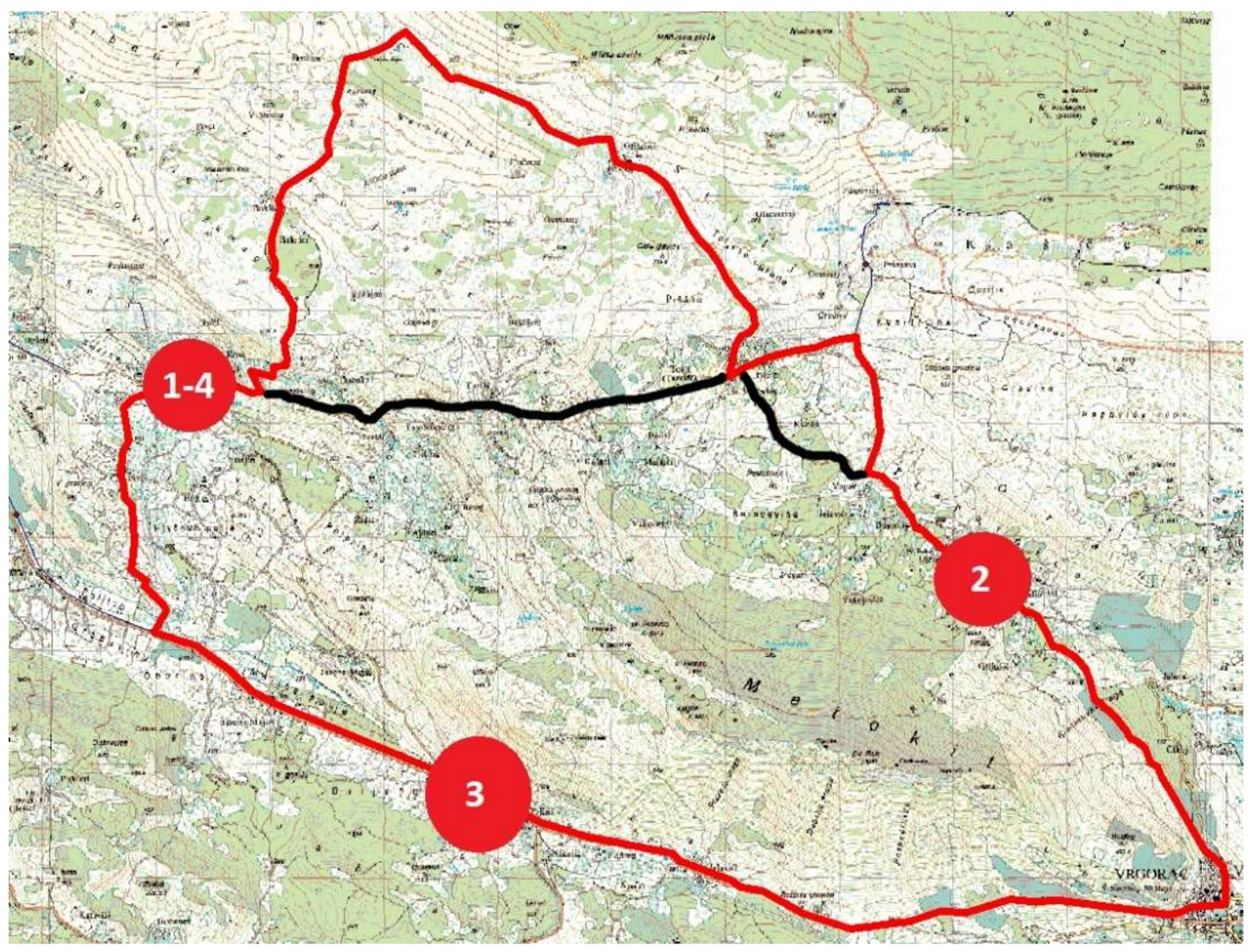
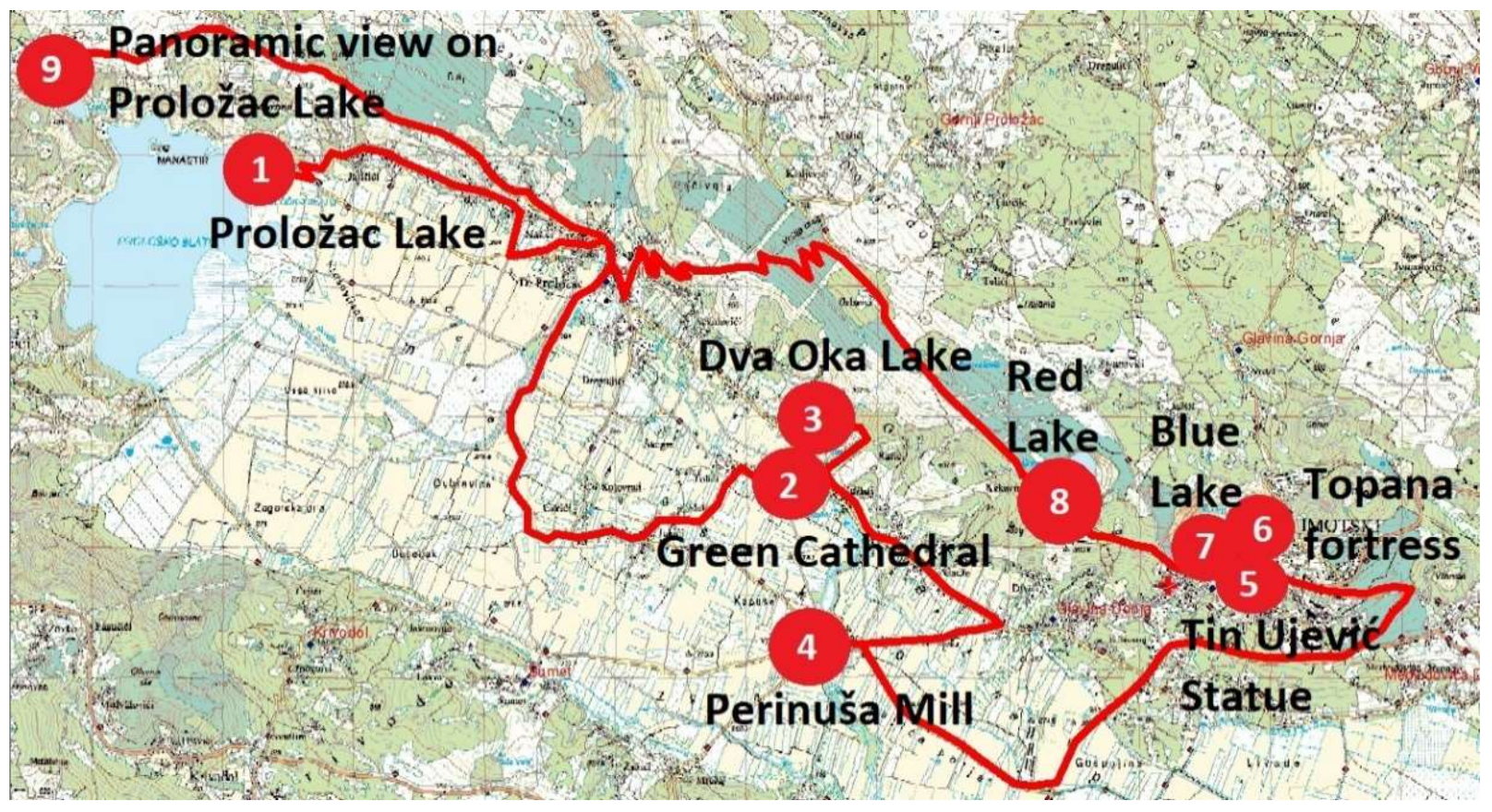
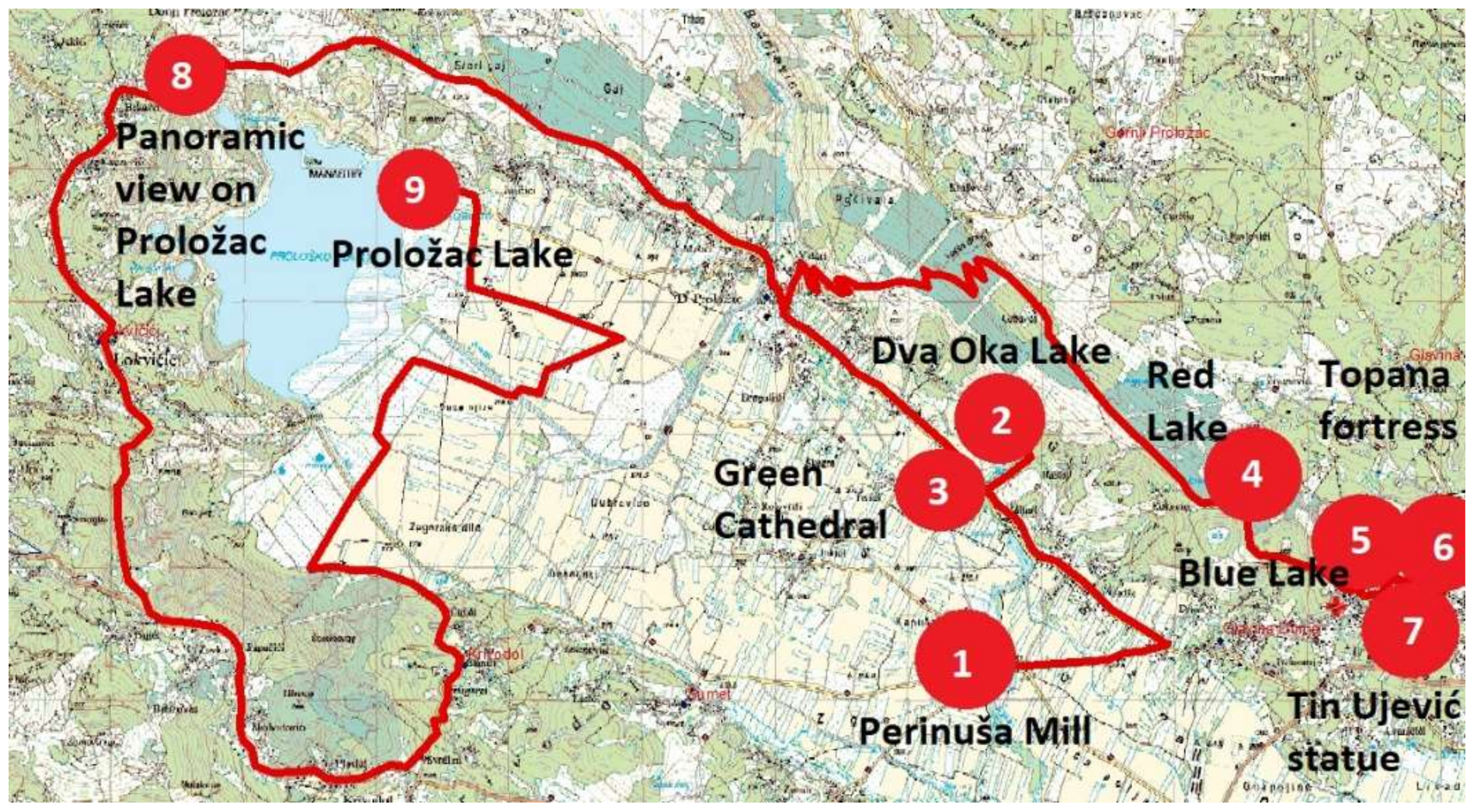

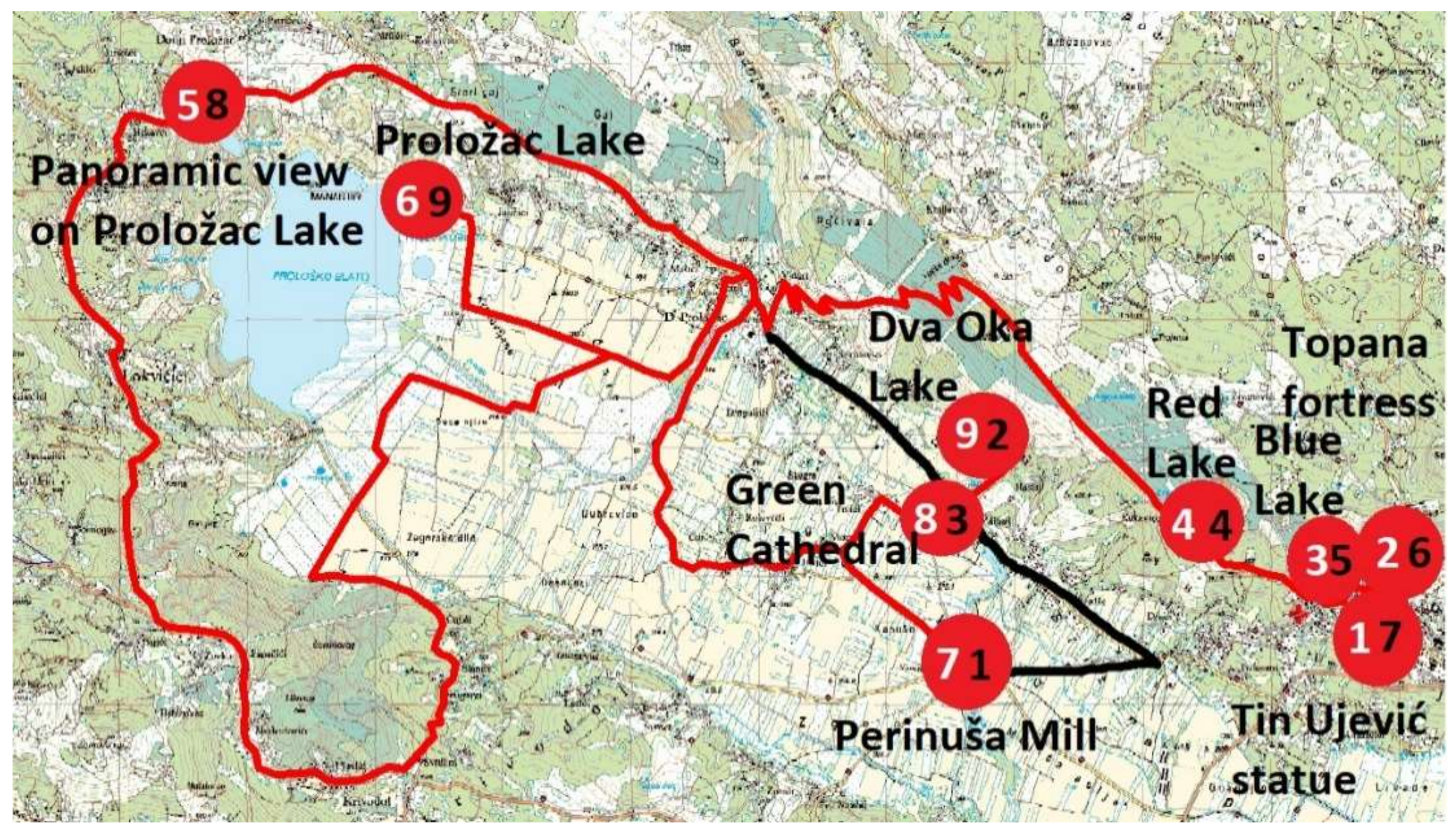


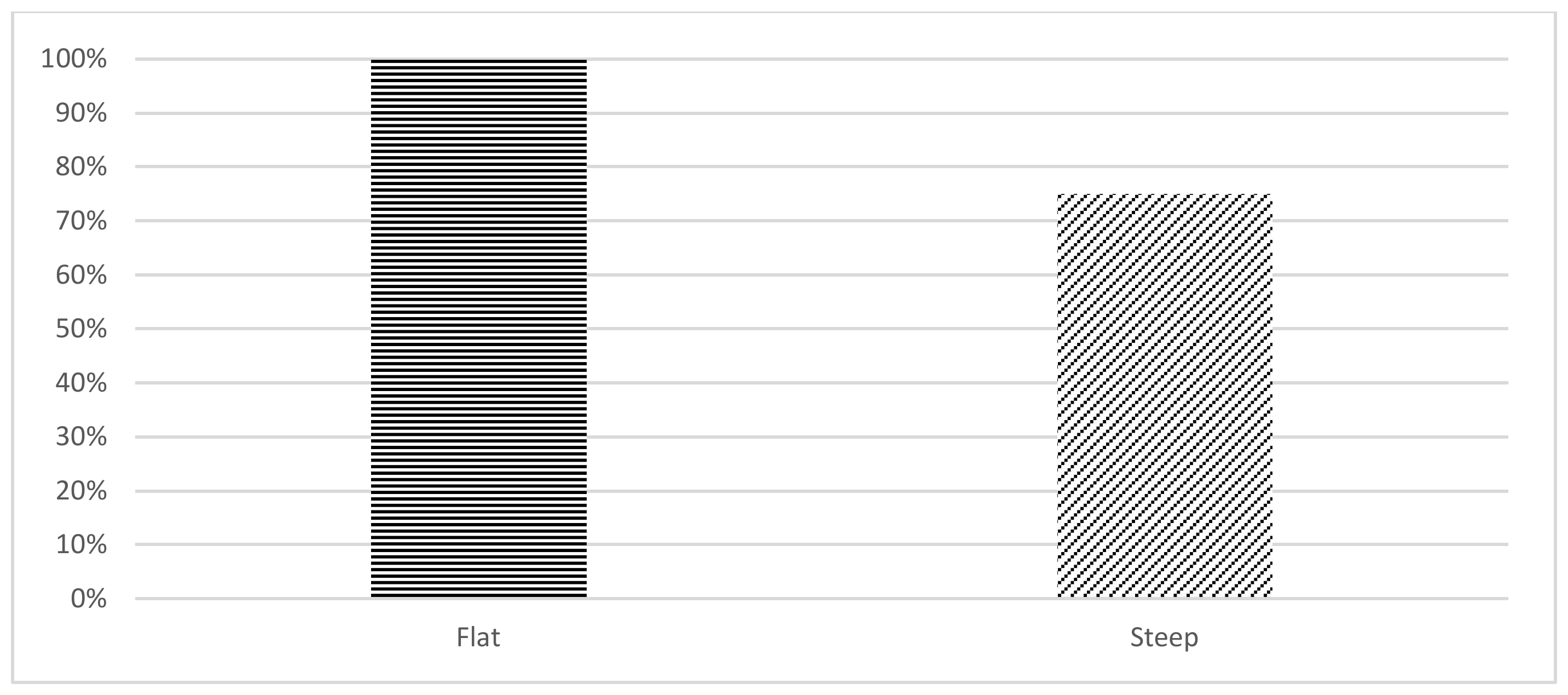

| Town | No. of Segments |
|---|---|
| Vrgorac | 168 |
| Knin | 215 |
| Imotski | 268 |
| Parameter | Description | Value |
|---|---|---|
| epochs | maximum number of training iterations | 1000 |
| time | maximum time of training in seconds | Inf |
| goal | performance goal in terms of the network’s performance functions | 0 |
| min_grad | minimum performance gradient | 10−7 |
| max_fail | maximum number of validation checks | 6 |
| mu | used for training with the Levenberg–Marquardt training function; the greater it is—the more weight is given to the gradient descent learning and small step size | 0.01 |
| mu_dec | amount to decrease mu after an unsuccessful step | 0.1 |
| mu_inc | amount to increase mu after a successful step | 10 |
| mu_max | maximum mu | 109 |
| Route | MSE | |
|---|---|---|
| Knin | Flat | 0.0298 |
| Steep | 0.0151 | |
| Vrgorac | Flat | 0.0572 |
| Steep | 0.0809 | |
| Route | Route Length (Overlapping) | Number of Segments in Route (Overlapping) | Percentage of Length Overlapping | Percentage of Overlapping Segments | |
|---|---|---|---|---|---|
| Knin | Flat | 16,542 m (16,542 m) | 19 (19) | 100% | 100% |
| Steep | 36,353 m (31,010 m) | 8 (5) | 85% | 62.5% | |
| Vrgorac | Flat | 42,420 m (33,293 m) | 21(18) | 78% | 86% |
| Steep | 25,021 m (19,766 m) | 17 (14) | 75% | 82% | |
| Type of Route | Route Length (Overlapping) | Number of Segments in Route (Overlapping) | Percentage of Length Overlapping | Percentage of Overlapping Segments |
|---|---|---|---|---|
| Flat | 35,660 m (31,872 m) | 29 (22) | 89% | 76% |
| Steep | 39,318 m (31,477 m) | 25 (22) | 80% | 88% |
| Type of Route | Route Length (Overlapping) | Number of Segments in Route (Overlapping) | Percentage of Length Overlapping | Percentage of Overlapping Segments |
|---|---|---|---|---|
| Flat | 35,660 m (35,660 m) | 29 (29) | 100% | 100% |
| Steep | 39,318 m (29,468 m) | 25 (18) | 75% | 72% |
Publisher’s Note: MDPI stays neutral with regard to jurisdictional claims in published maps and institutional affiliations. |
© 2021 by the authors. Licensee MDPI, Basel, Switzerland. This article is an open access article distributed under the terms and conditions of the Creative Commons Attribution (CC BY) license (https://creativecommons.org/licenses/by/4.0/).
Share and Cite
Đerek, J.; Sikora, M.; Kraljević, L.; Russo, M. Using Neural Networks for Bicycle Route Planning. Appl. Sci. 2021, 11, 10065. https://doi.org/10.3390/app112110065
Đerek J, Sikora M, Kraljević L, Russo M. Using Neural Networks for Bicycle Route Planning. Applied Sciences. 2021; 11(21):10065. https://doi.org/10.3390/app112110065
Chicago/Turabian StyleĐerek, Jurica, Marjan Sikora, Luka Kraljević, and Mladen Russo. 2021. "Using Neural Networks for Bicycle Route Planning" Applied Sciences 11, no. 21: 10065. https://doi.org/10.3390/app112110065
APA StyleĐerek, J., Sikora, M., Kraljević, L., & Russo, M. (2021). Using Neural Networks for Bicycle Route Planning. Applied Sciences, 11(21), 10065. https://doi.org/10.3390/app112110065






